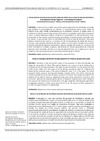Identificador persistente para citar o vincular este elemento:
https://accedacris.ulpgc.es/jspui/handle/10553/12948
| Campo DC | Valor | idioma |
|---|---|---|
| dc.contributor.author | Gómez-Figueroa, Julio Alejandro | en_US |
| dc.contributor.author | Salazar, Ciria Margarita | en_US |
| dc.date.accessioned | 2015-03-14T03:30:34Z | |
| dc.date.accessioned | 2018-03-15T14:35:27Z | - |
| dc.date.available | 2015-03-14T03:30:34Z | |
| dc.date.available | 2018-03-15T14:35:27Z | - |
| dc.date.issued | 2015 | en_US |
| dc.identifier.issn | 1886-8576 | en_US |
| dc.identifier.uri | https://accedacris.ulpgc.es/handle/10553/12948 | - |
| dc.description.abstract | La educación es el medio más prolífico para la adquisición de habilidades y actitudes que modelan la personalidad de los infantes. El comportamiento óptimo como medio de relación social, está iniciado primeramente por la percepción corporal. El trabajo centra su mirada en la relación que el sujeto escolar construye con sus iguales a partir de la convivencia motriz. El espacio ideal para modelar y observar la corporeidad es la clase de educación física. | en_US |
| dc.description.abstract | Education is the most prolific means of the acquisition of skills and attitudes that shape the personality of infants. The optimal behavior as a means of social relationship is initiated primarily by body perception. The paper focuses its attention on the relationship that builds school subject with their peers from the driving coexistence. Ideal for modeling and observing the corporeal space is the physical education class. | en_US |
| dc.format | application/pdf | es |
| dc.language | spa | en_US |
| dc.relation.ispartof | Revista Iberoamericana de Psicologia del Ejercicio y el Deporte | en_US |
| dc.source | Revista Iberoamericana de Psicología del Ejercicio y el Deporte [ISSN 1886-8576] v. 10 (1), p. 41-47, (2015) | en_US |
| dc.subject | 61 Psicología | en_US |
| dc.subject.other | Adolescentes | en_US |
| dc.subject.other | Violencia escolar | en_US |
| dc.subject.other | Educación física | en_US |
| dc.subject.other | Adolescents | en_US |
| dc.subject.other | School violence | en_US |
| dc.subject.other | Physical Education | en_US |
| dc.subject.other | Violência escolar | en_US |
| dc.subject.other | Educação Física | en_US |
| dc.title | Detección de violencia escolar en adolescentes en la clase de educación física | en_US |
| dc.title.alternative | School violence detection in adolescents in physical education class | en_US |
| dc.title.alternative | Escola de detecção da violência em adolescentes em educação física classe | en_US |
| dc.type | info:eu-repo/semantics/article | en_US |
| dc.type | Article | en_US |
| dc.compliance.driver | 1 | es |
| dc.identifier.absysnet | 537108 | - |
| dc.identifier.crisid | -;- | |
| dc.description.lastpage | 47 | en_US |
| dc.identifier.issue | 1 | - |
| dc.description.firstpage | 41 | en_US |
| dc.relation.volume | 10 | en_US |
| dc.investigacion | Artes y Humanidades | en_US |
| dc.rights.accessrights | info:eu-repo/semantics/openAccess | es |
| dc.type2 | Artículo | en_US |
| dc.description.numberofpages | 8 | en_US |
| dc.utils.revision | Sí | en_US |
| dc.identifier.ulpgc | Sí | en_US |
| dc.contributor.buulpgc | BU-FIS | en_US |
| dc.description.sjr | 0,311 | |
| dc.description.sjrq | Q3 | |
| dc.description.sellofecyt | Sello FECYT | |
| dc.description.esci | ESCI | |
| dc.description.dialnetimpact | 1,0 | |
| dc.description.dialnetq | Q1 | |
| dc.description.erihplus | ERIH PLUS | |
| item.grantfulltext | open | - |
| item.fulltext | Con texto completo | - |
| Colección: | Rev. Iberoam. psicol. ejerc. deporte. 2015. v.10, n.1 Artículos | |
Visitas
213
actualizado el 12-jul-2025
Descargas
147
actualizado el 12-jul-2025
Google ScholarTM
Verifica
Comparte
Exporta metadatos
Los elementos en ULPGC accedaCRIS están protegidos por derechos de autor con todos los derechos reservados, a menos que se indique lo contrario.
